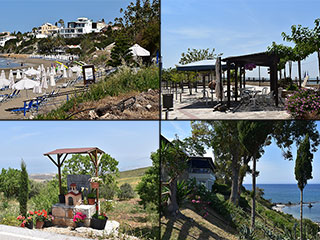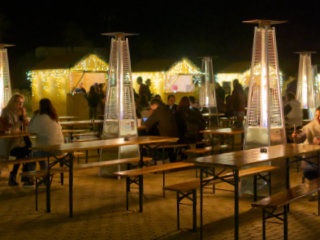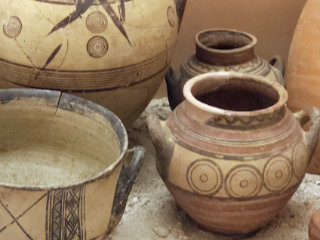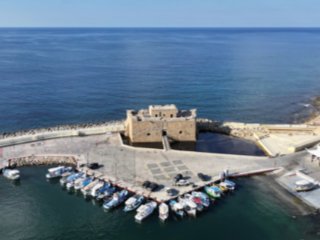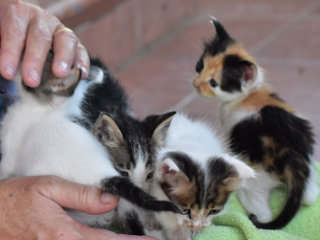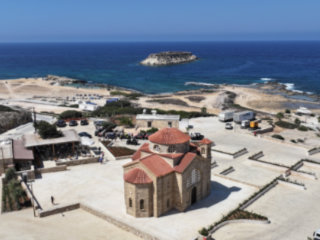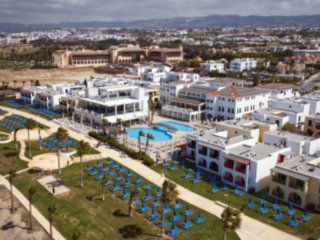The House of Dionysus
One Final Map
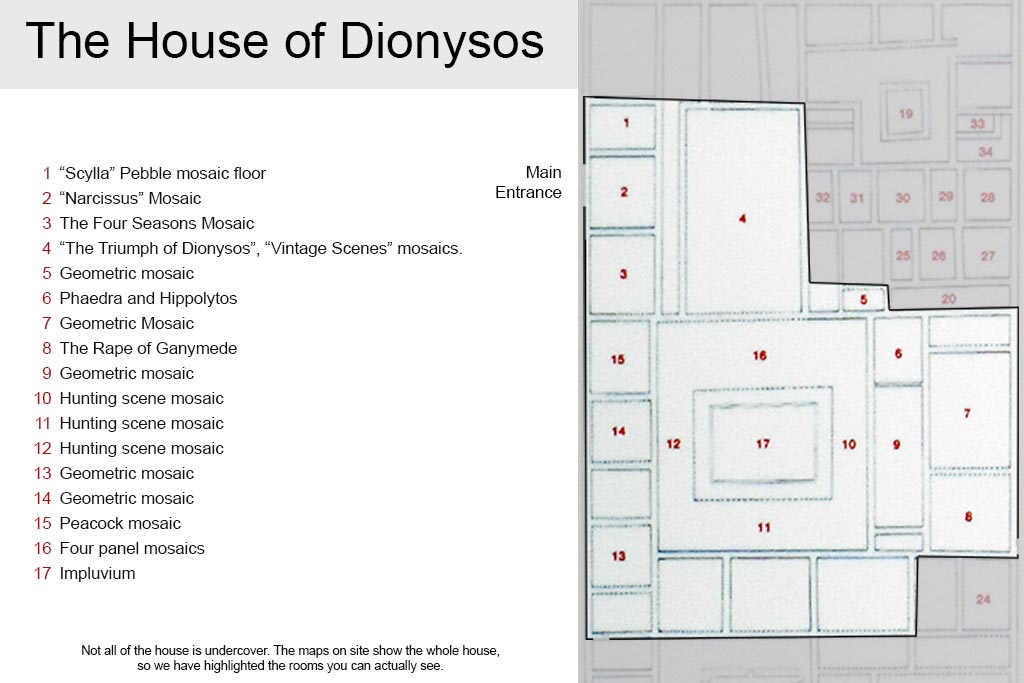
We are on the home straight now.

Geometric Mosaic
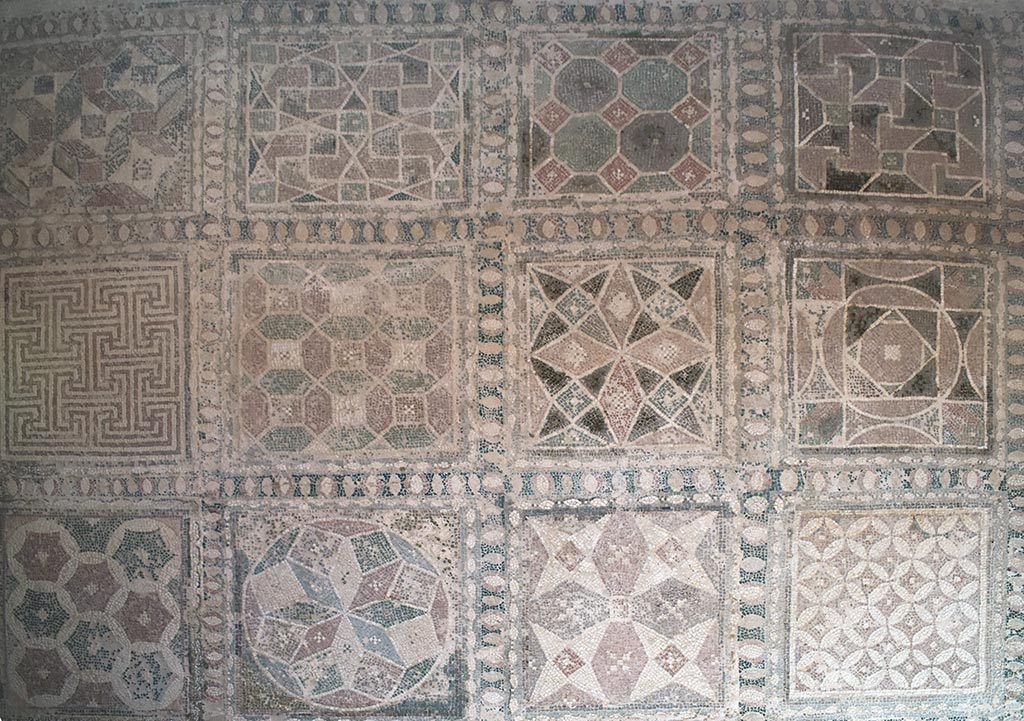
Room 14
Geometric Mosaic
Mosaic floor made of sixteen smaller panels, each presenting a different complex geometric design.
These look like some of the doodles on my old French Exercise Books at school. The picture only shows 12 of the patterns. The final row was obscured by bright sunlight.
Proud Peacock
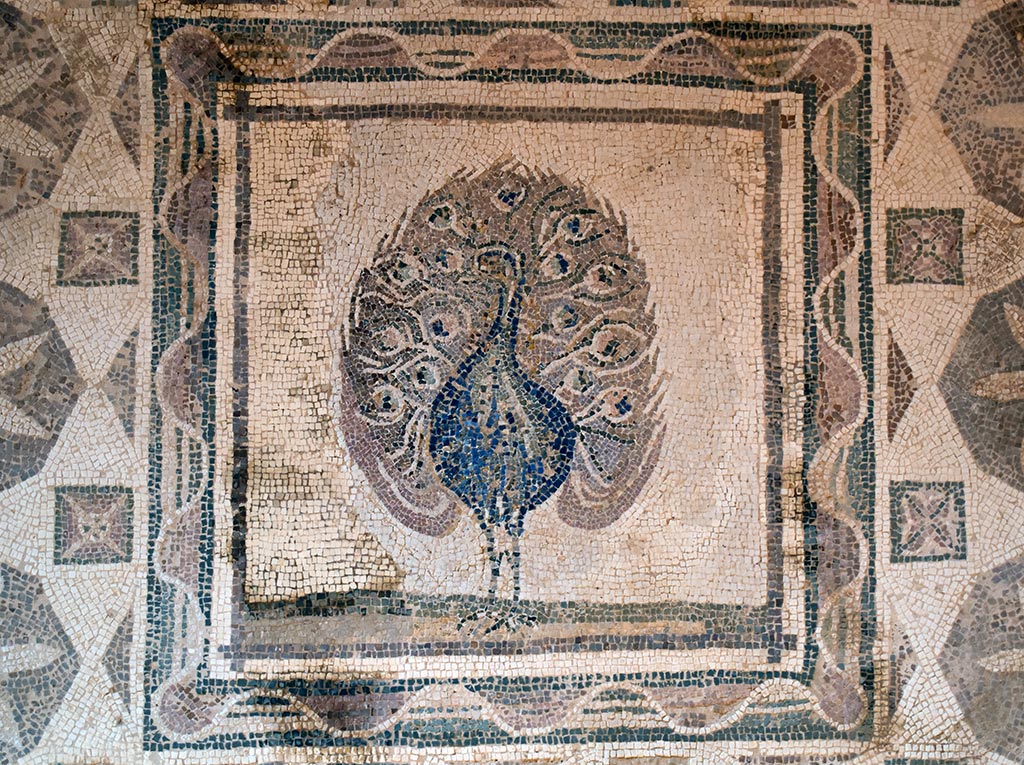
Room 15
Peacock mosaic
Central panel illustrating a peacock with full display of its blue tail.
The Final Fab Four
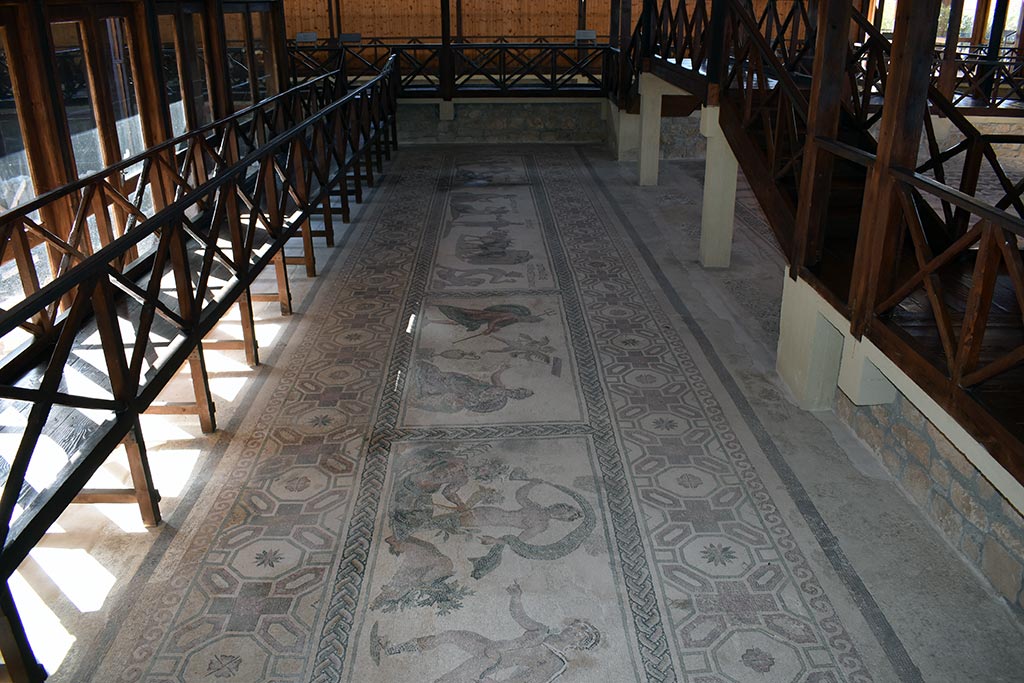
We've saved possibly the best mosaics until last. Room 16 has four panel mosaics, which we shall look at from left to right.
Pyramos and Thisbe
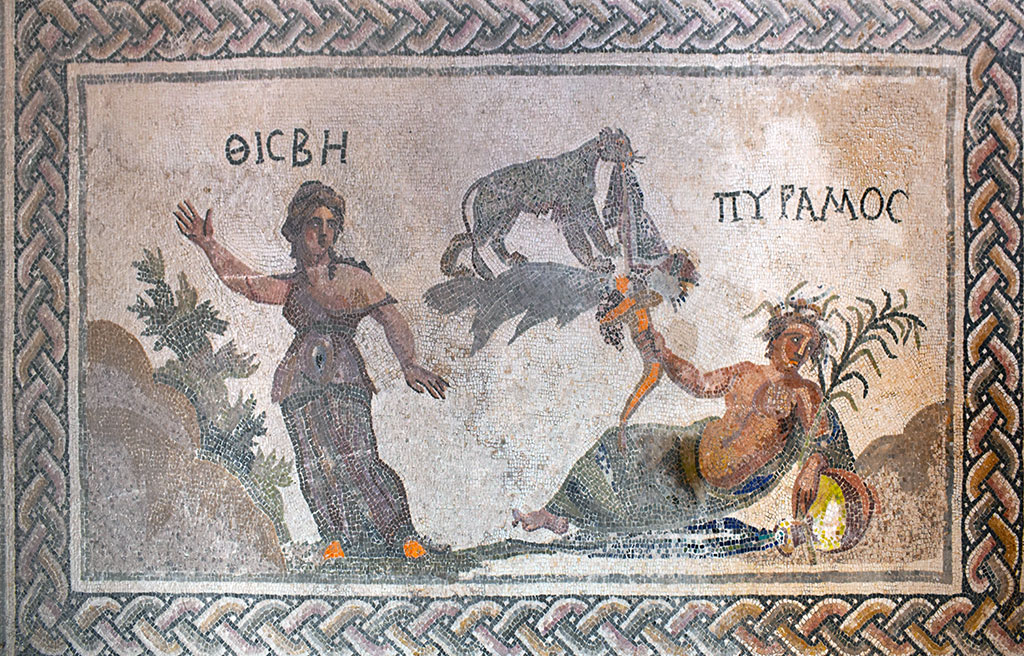
The first panel to the left represents the mythological love story of Pyramos and Thisbe. To the right corner, instead of Thisbe’s lover, there is a portrait of the river-god Pyramos. Thisbe is located to the left, while to the far back a tiger is holding Thisbe’s bloodied veil in his mouth.
In Ovid's Metamorphoses, Pyramus and Thisbe are two lovers in the city of Babylon who occupy connected houses/walls, forbidden by their parents to be wed, because of their parents' rivalry. Through a crack in one of the walls, they whisper their love for each other. They arrange to meet near Ninus' tomb under a mulberry tree and state their feelings for each other. Thisbe arrives first, but upon seeing a lioness with a mouth bloody from a recent kill, she flees, leaving behind her veil. When Pyramus arrives he is horrified at the sight of Thisbe's veil which the lioness had torn and left traces of blood behind, as well as its tracks. Assuming that a wild beast has killed her, Pyramus kills himself, falling on his sword, a typical Babylonian way to commit suicide, and in turn splashing blood on the white mulberry leaves. Pyramus' blood stains the white mulberry fruits, turning them dark. Thisbe returns, eager to tell Pyramus what had happened to her, but she finds Pyramus' dead body under the shade of the mulberry tree. Thisbe, after a brief period of mourning, stabs herself with the same sword. In the end, the gods listen to Thisbe's lament, and forever change the color of the mulberry fruits into the stained color to honor the forbidden love.
Source: wikipedia
There is another reason I find this panel interesting. The right of this mosaic looks a lot more colourful then the left. Originally I thought this was a bad photograph, but when I revisited the park it was raining. There is a hole somewhere in the roof, and it drips onto the walkway in front of this panel. A few splashes are landing on the mosaic, showing what it looks like beneath the dust.
This also indicates that some of the brightly coloured mosaics you see in books may not have been digitally enhanced. If they were taken after the mosaics had been given a wash, they really would be that colourful. We witnessed the same effect when we visited the House of Theseus after a rain shower. The mosaics look much nicer then.
Page 6 of 7


Related Blogs:
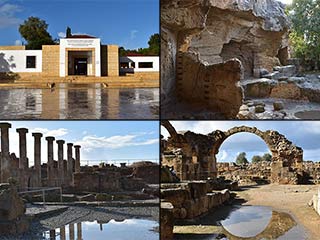
Paphos Archaeological Park - Summary
We first blogged about the Archaeological Park a couple of years ago. It was a short blog, and focused mainly on the pretty spring flowers. Now we are returning, to give the rest of the park the attention it so richly deserves.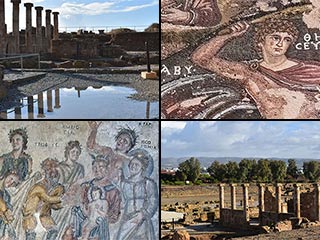
The Houses of Aion and Theseus
It's time now to start our detailled look at the Archaeological Park, so let's begin at the beginning. Once you enter the Archaeological Park, if you keep left, the first sites you will arrive at the The Houses of Theseus and Aion. Let's take a look at their mosaics and other attractions...Good Pages To Visit
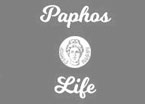
FB PagePaphos Life on Facebook
Like us on Facebook and stay notified of new blog posts.

FB PageOur Facebook Chat Group
Paphos Chat has been created for people who like our site and want to chat using Facebook. You can also easily upload photos of any size here. A lot of people are members of the Facebook chat group and the main forum. It's entirely up to you.

ListBlog Locations
Planning a day out? Then use our map of blog locations as a handy guide. Some of the places we visit our closer to each other than you might think, so take a look and start planning your next adventure...
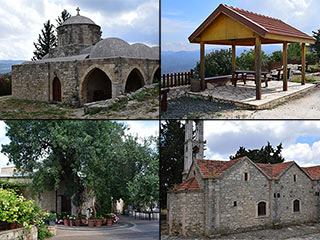
eBookCyprus Road Trip 01: the Kathikas - Panagia Loop
Let me take you on a journey around the region of Paphos, Cyprus. Starting at Paphos itself, we travel to Akoursos, then Kathikas, Kritou Terra and Simou. We continue past Lasa and Kannaviou, before taking in the delights of Panagia. Getting a bit more adventurous, we visit the abandoned villages of Statos and Agios Fotios, before passing through Choulou, Letymbou and Polemi, and rejoining the main Paphos - Polis road.
The route is suitable for all types of vehicle, and requires no off-roading. The guide contains about 130 photographs including shots of all the road signs you need to pay attention to, as well as some of the highlights you may experience along the way.
There are also several maps which will help you keep your bearings.
You can do this journey in a day, or you can break it up into chunks. You can also do it in reverse, to get some completely different views. It is entirely up to you.
